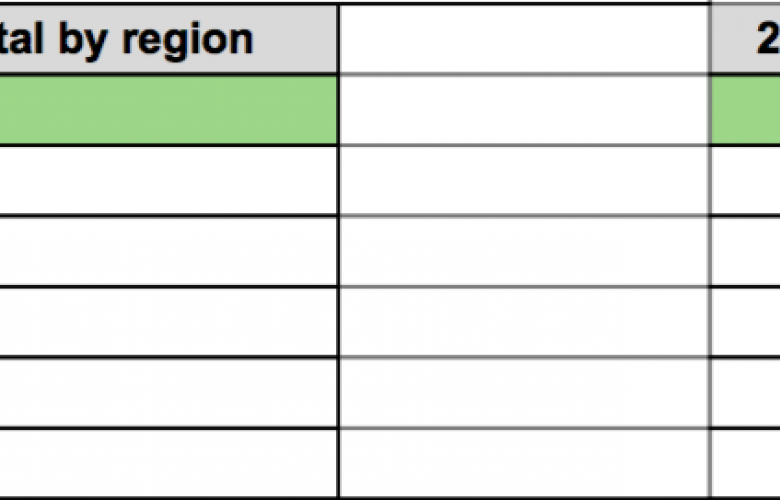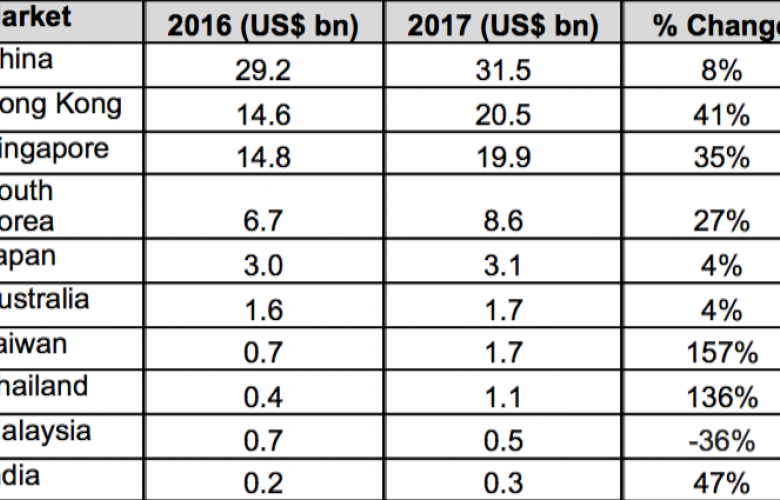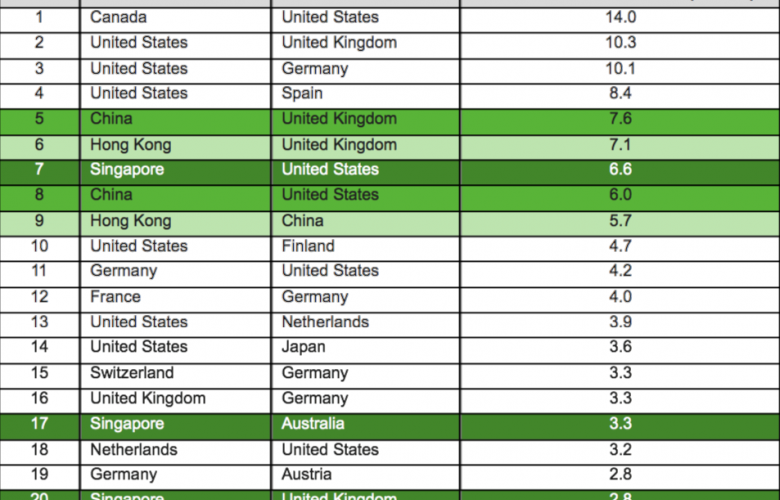Knight Frank's launch of Active Capital: The Report 2018 which looks at the shifts in capital flows, and identifies the sources and destinations of cross-border investments in commercial real estate.
Active Capital: The Report 2018 at a glance:
- China tops Asia-Pacific outbound flows, followed by Hong Kong and Singapore.
- US, UK and Germany - top destinations for inbound capital.
- 2018 outlook - Japanese, South Korean and Singaporean investors to watch.
2017 marked the first time since first tracking the markets in 2007 where Asia-Pacific has overtaken Europe and North America as the top source of cross-border capital outflows.
Cross-border capital outflows by source, 2017
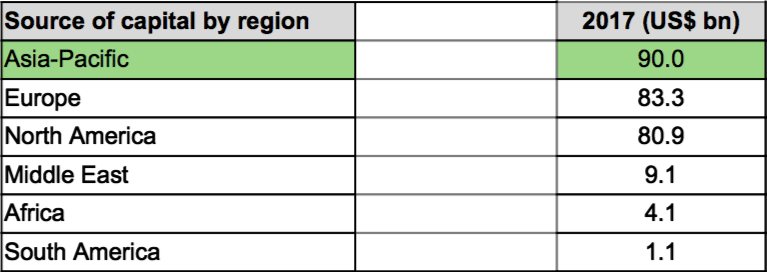
Source: Knight Frank/RCA; Active Capital Report 2018
Looking at 2017’s total real estate transactions (excluding development sites), Asia-Pacific exported US$90 billion, of which US$19.8 billion and US$19.6 billion were invested in the US and the UK respectively.
The report also shows that the global real estate market is re-internationalising. In 2017, 32% of all transactions by volume involved cross-border purchases, up from 25% during 2009-2011.
Neil Brookes, Asia-Pacific Head of Capital Markets, Knight Frank, says, “Asia-Pacific was the largest exporter of capital in 2017 despite a significant slowdown from China due to government capital controls. The reduction in outbound Chinese capital was countered by significant increases in Singaporean, Japanese and, to a lesser extent, South Korean capital emigrating to the US and Europe."
“A major driver for the increase in outbound capital is the surge in the strength of the domestic markets in Asia-Pacific where the region saw a 36% increase in investment activity in the 12 months to March 2018, with the first quarter of this year setting an all-time record for transaction volumes,” he said.
Asia Pacific cross-border capital outflows by source
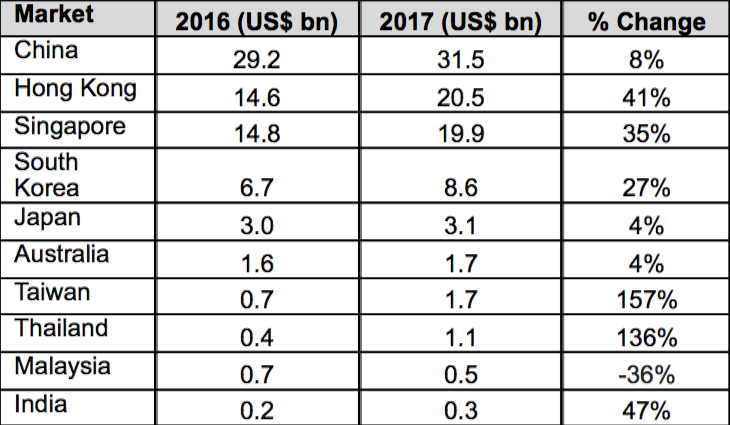
Source: Knight Frank/RCA
Nicholas Holt, Asia-Pacific Head of Research, Knight Frank, says, “The increase of cross-border capital emanating from the Asia Pacific region demonstrates the growing confidence and comfort of many different types of investors in this region sourcing and executing on opportunities outside their home jurisdictions."
Holt continued, “While China remains the top capital exporter, Hong Kong and Singapore with 41% and 34% year-on-year growth in volumes in 2017 respectively, were more active as limited local liquidity and diversification strategies encouraged investors to look overseas.”
Inbound capital
On a regional level, North America continues to see a greater volume of activity than anywhere else for inbound capital, although the vast majority is from domestic investors, with less than 15% of volume accounted for by purchasers from abroad.
Examining the specific market to market routes for cross-border capital flows, the US, UK and Germany held the top three spots in 2017 attracting inbound investment. The top 20 routes reinforce the position that China, Hong Kong and Singapore are the largest exporters of capital from Asia-Pacific in 2017.
Top 20 routes of cross-border real estate capital, 2017
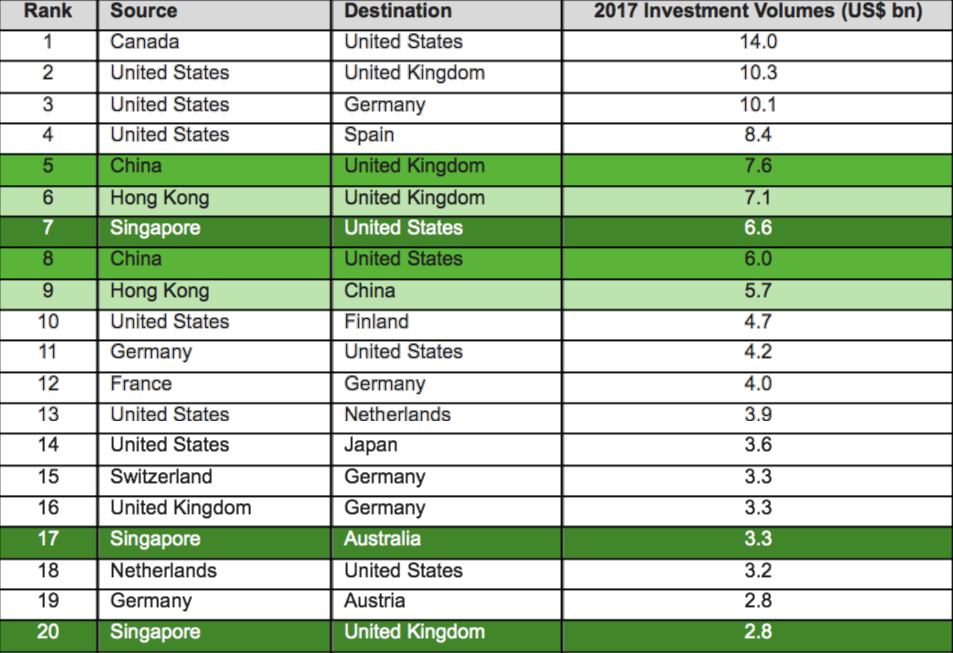
Source: Knight Frank/RCA; Active Capital Report 2018
Outlook for 2018 capital flows
The report highlights that the coming years will see the reactivation of mandates from a number of regions with significant investment firepower.
The re-emergence of Japan as a major purchaser investor could reinvigorate cross-border capital flows if even a small additional share of domestic investment found its way into overseas markets.
Brookes explains, “We expect Japanese investors to continue their outbound expansion in 2018. Last year, we started to see Japanese capital venturing overseas actively. Mori Trust, Japan’s real estate giant, purchased 10 St. James and 75 Arlington in Boston for a combined US$673 million; and most recently, the US$268.5 million sale of Tilt 49 in Seattle to a major Japanese fund. Both of these Japanese buyers were new entrants to the growing market for overseas real estate investment opportunities."
“With the fluctuations in currency, some investors have been hit by currency hedging costs. In the pursuit of resilient returns, these investors are now primarily seeking US commercial real estate debt opportunities, which is fast becoming a fundamental part of the allocation for South Korean institutional investors. Apart from the US, South Korean investors have also been very active in Europe and the UK seeking long leased assets in the office and logistics sectors.
“Several Singaporean investors are now seeking for investment opportunities in the US and Europe this year. Knight Frank is working with them to primarily target office assets, logistics, as well as specialist sectors such as student accommodation and data centres to diversify their income away from their core markets of China and Hong Kong.”
Holt adds, “While rising interest rates and further trade tensions remain risks for global real estate investors, the macroeconomic environment remains supportive to many real estate classes. We expect outbound capital volumes from Asia-Pacific to likely reach similar levels to those of last year in 2018, given the increasing drive for diversification, limited local liquidity and growing familiarity with offshore markets."
Click here to view the Knight Frank Active Capital: The Report 2018.
For more information or to discuss the report, phone or email Nicholas Holt, Asia Pacific Head of Research for Knight Frank via the contact details listed below.
Similar to this:
Vietnam an "attractive destination for foreign investment" says JLL
In Singapore "overall real estate investment sales remained healthy" during Q2
Knight Frank say Malaysia's property market is picking up




